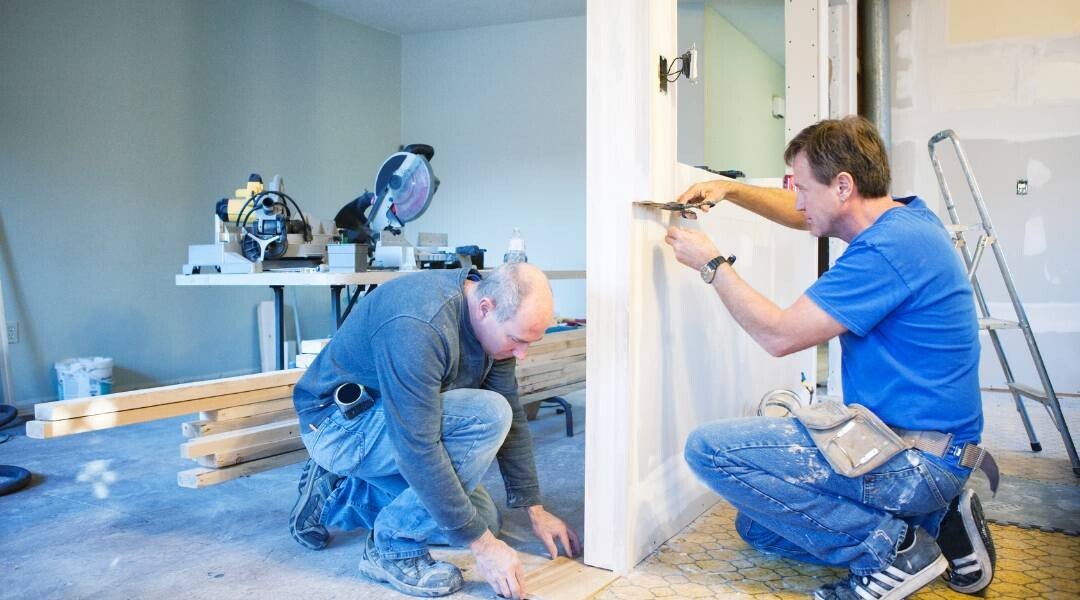
You’re a rental property owner constantly seeking ways to maximize revenue. So, how do you tell if your property needs renovations? Spotting signs early can save on hefty maintenance costs later. Recognizing these key indicators lets you know when it’s time for some major home improvements before the next tenants move in.
Assessing Property Condition
When contemplating the perfect moment to spruce up your rental property, a key stage involves assessing its condition. Your major focus should be on areas that grab immediate attention, such as floors and walls. A fresh coat of paint can breathe new life into any space, creating positive first impressions for potential tenants. Likewise, ensure clean flooring without noticeable defects or worn-out patches if you have carpeting.
Consider shifting towards low-maintenance hard surfaces, which also offer an updated look to your home. Do appreciate that age isn’t merely about numbers; it shows! Old kitchen appliances may need replacement, along with outdated plastic blinds prone to falling off, leading both present and future residents to be frustrated by malfunctions in everyday use items.
Consider renovating certain elements of the house before listing it for rent. This has the potential to bring in better-quality tenants and reduce the time the house remains unoccupied. Higher-quality tenants are more likely to be willing to pay higher rent.
Gauging Usage and Appeal
You want a rental property that works for you, not the other way around. A remodel can be just the solution if the upkeep feels like it’s never-ending or your expenses are straining your profit margins. Up-to-date appliances and features not only lessen maintenance needs but also cut back on costs in many cases.
Of course, renovations aren’t solely about reducing headaches; they also lure higher-quality tenants into signing leases with you. Primed to pay punctually and take good care of where they live, these ideal renters appreciate optimized spaces equipped with amenities such as washers/dryers or friendly setups for their pets, essentially making them stick around longer.
Boosting appeal directly leads to increased value, a powerful incentive for any landlord. These landlords may look forward to an upward rent adjustment after improvements have been made, or their strategy could include building up more property investments in time.
Deciding on Changes to Make
Prioritize upgrades that are immediately noticeable upon inspection, but avoid personal bias influencing your choices. Focus on improving livability for potential tenants. It is important to understand market demands to know what changes to implement. For example, if properties with extra bedrooms are more popular amongst renters in the Dallas, Texas, area, investing in this would be beneficial.
Remember, not all improvements require drastic modification; upgrading dated fixtures or adding a fresh coat of paint can enhance visual appeal without breaking the bank. Undertaking expensive infrastructure modifications might drain resources if there’s an insufficient tenant pool at current times.
Balancing renovation expenses against viable rent increments and occupancy rates helps prevent unnecessary financial strain during slow periods. Before committing to refurbishments, though, plan carefully considering capital requirements vs.
Profitability enhancement objectives from such exercises. That way, one avoids getting shocked by unanticipated outflows when settling bills later while ensuring project viability up-front. Remember, ultimately, it’s about sensible asset management, not just aesthetics-improvement blindly!
Calculating Cost of Renovations
Remember to make a detailed cost estimate. The projected rent increase or the return from selling your upgraded property are key indicators here. Don’t proceed unless these figures justify your investment in revamping.
Be aware that tax benefits favor repairs over full-scale renovations for landlords. Immediate deductions are typically available if it’s just minor fixes, while major upgrades need time-bound amortization. To optimize costs when renovating fixtures such as floors and cabinets, consider refurbishing over replacing entire units whenever practical.
Remember, stock cupboards fall within $80-400 per unit compared to custom ones that set you back by $500-1500 each! Again, before changing household systems like heating or air conditioning, evaluate their remaining lifespan versus replacement expenditure along with potential long-term savings through improved energy efficiency.
In essence, identify which areas would give maximum returns post-renovation without necessarily opting for bigger changes.
Considering Maintenance Costs Post-Renovation
Reflect on the post-renovation phase, where maintenance costs come into play. Don’t you want this property to stay in top shape? Take a moment to forecast future upkeep expenses based on current modifications made.
Identify items that are likely often replaced or repaired due to wear and tear. Remember your lovely hardwood floors installed recently? Although they’re durable, caring for them involves cost, too!
Regular cleaning with specific products ensures their longevity but adds up over time. Also, think of newly fitted state-of-the-art appliances like stainless steel oven ranges and refrigerators. These additions are not free from potential breakdowns either. This means there could be repair service fees down the line if something goes wrong.
Exploring Funding Options
Understanding your funding options remains pivotal to any renovation process. One noteworthy option includes traditional bank loans, which often present lower interest rates but might require a substantial down payment.
Another viable alternative could be home equity lines of credit (HELOC). This would involve leveraging the existing value of your property for needed funds. Alternatively, you could consider private investors or hard money lenders. These usually offer convenient short-term financing options with less rigid qualification requirements. However, it is important to note that they generally have higher interest rates.
Exploring federal programs like FHA 203k Rehabilitation Loans can also prove beneficial as these loans are specifically designed for property improvements and repairs. Government-sponsored initiatives often have the benefit of offering accessible terms and affordable repayment schemes. Therefore, it is worth considering these options.
Consider each of these alternatives carefully before deciding on the most suitable one that matches your financial capacity and anticipated project course, as well-planned renovations should yield fruitful returns without causing undue finance-related stressors.
Restoring your property can upgrade its appeal, boost tenant satisfaction, and help you justify higher rents. Remember, at Local Dwelling, we’re here to assist you in maximizing the potential of your real estate investments in Dallas, Texas.
Post by invest-dallas.com Team, Source: localdwelling.com








